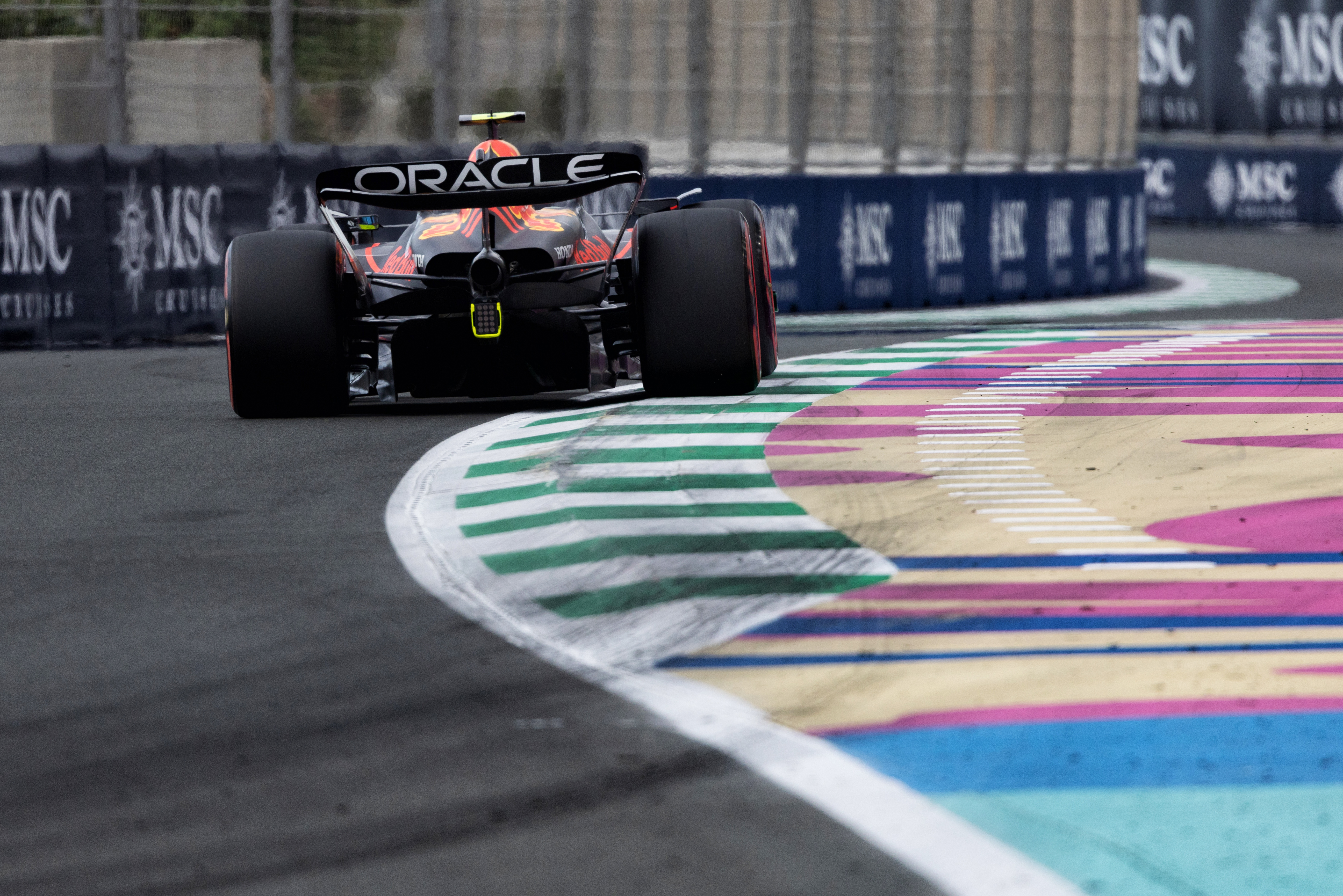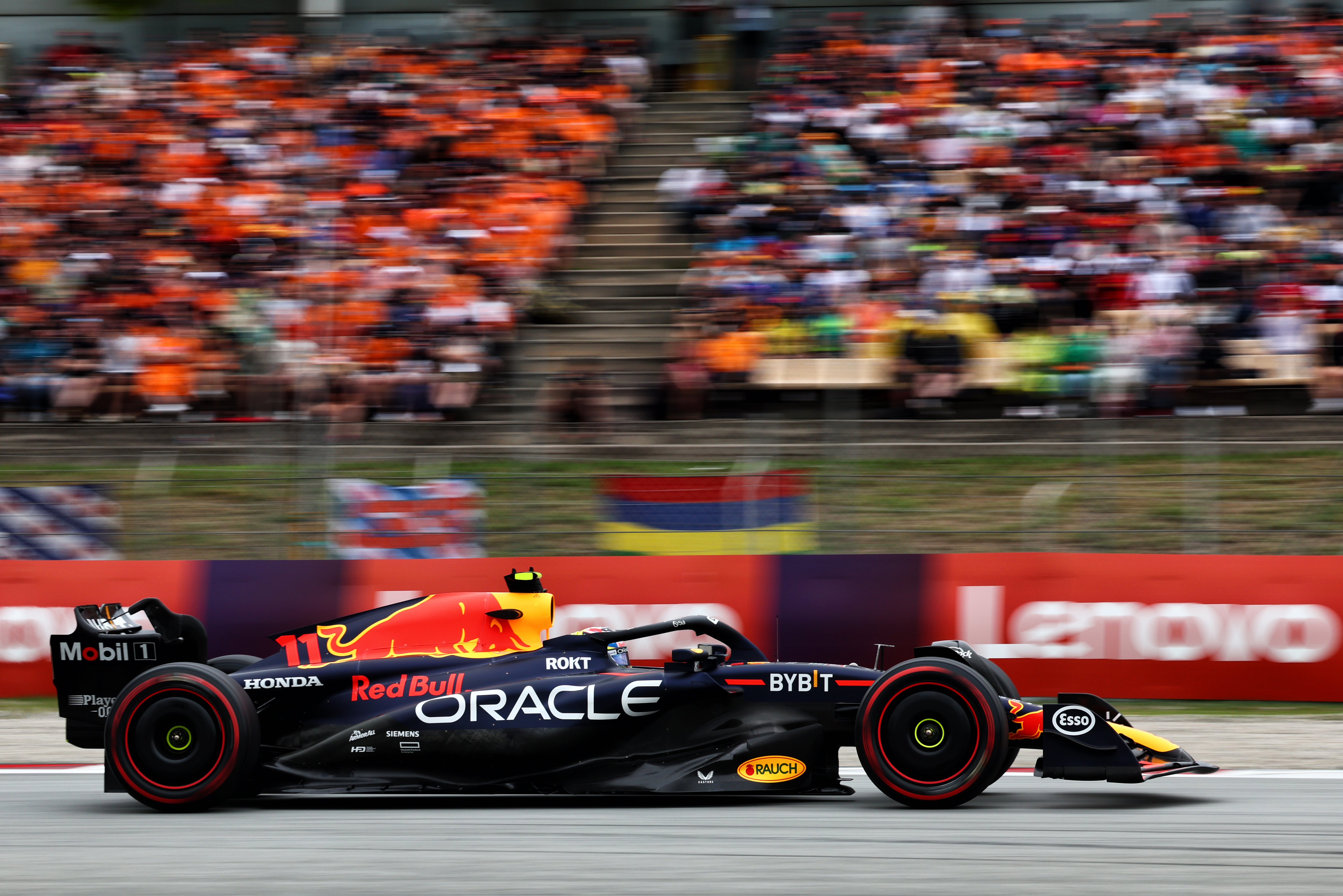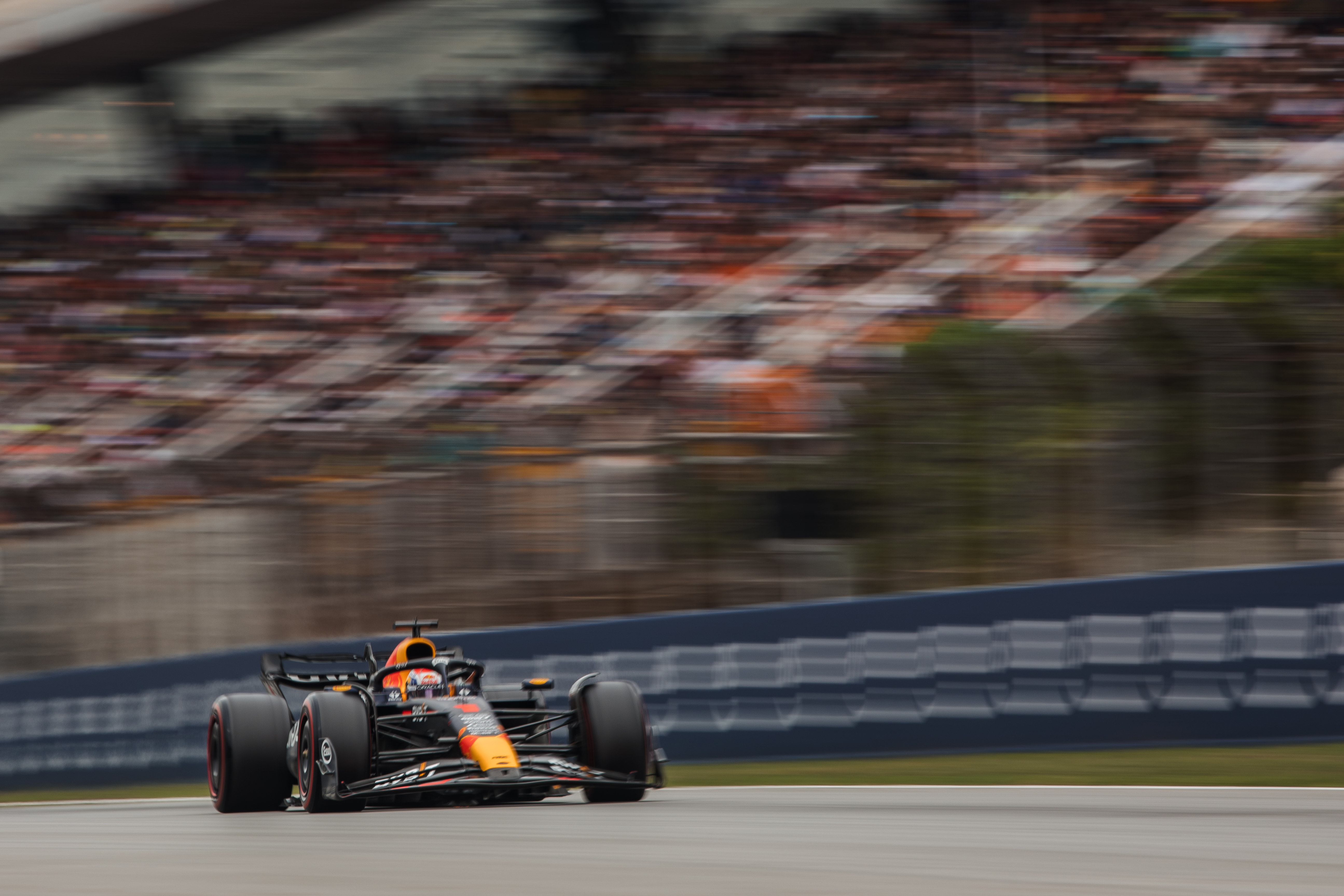Would the deletion of DRS in qualifying – as mooted by Auto Motor und Sport as a potential Formula 1 rule change earlier this week – reduce Red Bull’s current advantage? Yes, it would. But the effect would vary from track to track. Enough to deny it pole position? At a few tracks, yes. At most, no.
After all let’s recall that Max Verstappen’s pole time at Spa, 0.82 seconds clear of the field, was set without DRS as conditions were still damp and the feature hadn’t been enabled. Even at those very few tracks where no DRS could lose it pole, the Red Bull’s greater aerodynamic efficiency would still ensure it was always the fastest car on race day.
The Red Bull can derive a greater DRS effect than any other car. Given that DRS is currently freely available to use in qualifying, it’s only logical that the RB19 would lose more than the others if DRS was withdrawn in that session. But such is the RB19’s all-round superiority, the impact would be small.
We can show the theoretical qualifying times from each track without DRS by studying the GPS data – and that’s what you see in the tables below.
Jeddah

Here we have taken polesitter Sergio Perez’s advantage over the fastest non-Red Bull race day car, which was Fernando Alonso’s Aston Martin. The Ferrari was actually the second-fastest qualifying car, but its deficit was considerably more than it lost out to Red Bull in the DRS zones.
Time gained by Perez over Alonso in DRS zones
| DRS 1 | DRS 2 | DRS 3 | Total gain | |
| Qualifying (DRS) | 0.157s | 0.063s | 0.203s | 0.423s |
| Race (no DRS) | -0.1s | 0.112s | 0.111s | 0.123s |
Red Bull qualifying DRS benefit over 2nd fastest race day car = 0.3s
Red Bull overall qualifying advantage over that car = 0.465s
Percentage of Red Bull’s qualifying margin derived from DRS zones = 64.5%
In reality, it would not be that simple because if DRS was no longer available in qualifying, that would in most cases change the wing levels each team would choose. So there would be a different comparison than just the existing qualifying times for each car minus the DRS effect. Whichever way you configured it, aerodynamic efficiency would win out. All we’d be changing by deleting DRS would be the way in which the Red Bull’s aero efficiency superiority was manifest.

At most tracks, measuring just by removing the DRS effect from the cars as they ran (ie with the existing wing choices), Red Bull would still be on pole. At most tracks the DRS advantage alone is not buying Red Bull pole but is merely contributing to it. Without DRS, the same track position advantage at those tracks and Red Bull’s unchanged race day superiority would play out in exactly the same way.
The only time things would be different would be at those tracks where Red Bull’s pole margin has been entirely reliant on its DRS advantage. We can see if we delete the DRS effect from existing qualifying times, Verstappen would not be on pole in Austria, for example.
He would have lost out to Charles Leclerc’s Ferrari instead (this is all theoretical, of course, because in reality with their cars’ different speed profiles over the lap, the drivers would not drive laps identical to those which they did). Without the track position advantage of pole, would Verstappen still have won in Austria? Almost certainly – because the car was much faster on race day than the Ferrari. It would have just been a question of how Verstappen got past, either on track or around the pitstops.
Barcelona

Here we have compared Verstappen’s advantage over the second-fastest car on race day, Lewis Hamilton’s Mercedes. Carlos Sainz’s Ferrari was actually second-fastest qualifier but with a much bigger deficit than could be accounted for by any Red Bull time gain under DRS.
Time gained by Verstappen over Hamilton in DRS zones
| DRS 1 | DRS 2 | Total gain/loss | |
| Qualifying (DRS) | 0.048s | 0.133s | 0.181s |
| Race (no DRS) | 0.037s | -0.085s | -0.048s |
Red Bull qualifying DRS benefit over 2nd fastest race day car = 0.229s
Red Bull qualifying advantage over that car = 0.762s
Percentage of Red Bull’s qualifying margin derived from DRS zones = 30.05%
The differences in the extent of the DRS advantage is largely to do with the circuit layouts and what proportion of the total lap the DRS zones account for. But it is also to do with the chosen wing levels.
Jeddah represented one of the biggest advantages Red Bull gained from the DRS zones (0.3s) in the season to date, with Barcelona one of the smallest.
The DRS contribution to the Red Bull’s qualifying advantage was only 30% in Spain and more than double that in Saudi Arabia. But delete the DRS and the outcome of Red Bull being on pole would be unchanged. The only difference would be the margin – which of course counts for nothing in terms of grid position.
That Red Bull pole would be intact regardless of whether we compare the Red Bull to the second-fastest qualifier or the second-fastest race car.
The fact that the identity of the second-fastest car tends to change between qualifying and race day is extra confirmation of the apparent futility of trying to compete with the RB19, as an aerodynamic car trait which favours qualifying will tend to work against it in the race and vice-versa.

